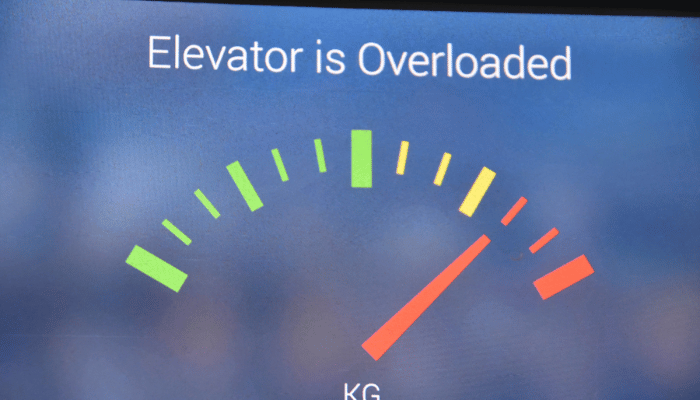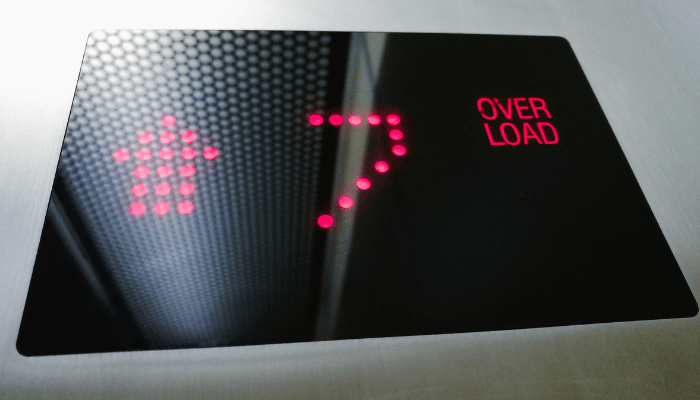
Have you ever thought about what happens when elevator weight limits are exceeded? It’s not just a matter of numbers—it’s a critical safety issue. Exceeding these limits can compromise the elevator’s structural integrity, risking breakdowns and accidents. More than that, it puts undue stress on the entire building’s infrastructure, potentially leading to costly repairs and downtime. Join us as we delve into why these weight limits matter and how you can ensure the safety and reliability of domestic lifts.
Understanding Elevator Weight Limits
Designed for Specific Capacity
Each elevator is engineered to handle a specific weight capacity, considering various factors such as the elevator car’s size and materials, the hoisting mechanism’s strength, and the intended number of passengers it can safely transport.
Factors Determining Capacity
The primary determinants include the elevator’s size and construction materials, the efficiency of its hoisting mechanism, and the maximum number of passengers it can accommodate comfortably.
- Size and materials: The size and materials of the elevator car directly affect its weight-bearing capability.
- Hoisting mechanism: A robust hoisting, typically screw and nut, hydraulic or traction-based, determines how efficiently the elevator can move its load.
- Number of passengers: The number of passengers allowed is critical, as each person adds to the total weight the elevator must safely transport.
These elements together determine the elevator’s maximum capacity and ensure safe operation within specified weight limits, which are crucial for maintaining both passenger safety and the longevity of the elevator system.
Safety Regulations
Adherence to safety regulations, including those outlined in building codes and manufacturer specifications, ensures elevators operate within safe limits to prevent accidents and maintain reliability.
Understanding these factors is crucial for building owners and managers to ensure compliance, uphold safety standards, and prolong the lifespan of lifts for homes.

Why Elevator Weight Limits Are Crucial?
Elevator weight limits are crucial for several compelling reasons, primarily concerning safety, equipment integrity, and liability considerations.
Equipment Strain and Damage
Exceeding weight limits places undue strain on the elevator’s components, including its motor, cables, and braking system. This strain can lead to accelerated wear and tear, frequent breakdowns, and costly repairs. Over time, it can compromise the elevator system’s overall reliability and lifespan.
Passenger Safety Issues
Safety is paramount in elevator design and operation. Excessive weight can overload the elevator, causing it to malfunction or become stuck between floors. This poses serious safety risks to passengers, such as entrapment or even incidents of structural failure. Adhering to weight limits ensures elevators operate within safe parameters, reducing the likelihood of accidents and ensuring passenger well-being.
Liability Issues
Building owners and managers are legally responsible for maintaining safe conditions for occupants and visitors. Failure to adhere to weight limits can lead to liability issues in case of accidents or injuries resulting from elevator malfunctions or failures caused by overloading. Negligence in maintaining proper elevator safety standards can result in legal repercussions and financial liabilities.
In conclusion, respecting elevator weight limits is not merely a matter of compliance but a critical practice to safeguard equipment, protect passenger safety, and mitigate legal risks.

How to Avoid Elevator Overload?
You can follow these practical guidelines to prevent elevator overload and ensure safe operation.
Pay Attention to Weight Limit Signs
Every elevator displays a maximum weight capacity sign. Respect this limit by monitoring the combined weight of passengers and any cargo being transported. Distribute weight evenly to avoid exceeding the designated capacity.
Divide Large Groups or Heavy Cargo
If traveling with a large group or transporting heavy items, consider dividing them into smaller loads that comply with the elevator’s weight limit. This reduces the risk of overloading and ensures the safety of all passengers.
Report Suspected Overloading
If you suspect the elevator is overloaded or behaving unusually (e.g., slow movement, unusual noises), refrain from using it and report the issue to building management or maintenance immediately. Prompt reporting can prevent potential accidents and ensure that the elevator is promptly inspected and serviced if necessary.
Upgrade Your Home With SWIFT Residential Lifts
Elevate every moment with SWIFT Lifts—where comfort meets cutting-edge technology. We offer sleek, modern residential home elevators that seamlessly integrate into your home, providing effortless access across multiple floors. Whether you’re enhancing accessibility for aging loved ones or simply upgrading your lifestyle, our lifts promise reliability, safety, and style. Experience the pinnacle of innovation with customizable options and eco-friendly features that align with your vision. Contact us today and rise above the ordinary!
FAQs
Exceeding the elevator weight limit can strain the system’s components, potentially leading to malfunction, increased wear and tear, and in severe cases, elevator failure or entrapment between floors.
The maximum weight in an elevator varies depending on its design and specifications, typically ranging from 250 kg to 500 kg for standard residential and commercial elevators.
The weight limit for a hydraulic elevator generally ranges from 2,500 pounds (about 1134 kilograms) to 5,000 pounds (about 2268 kilograms), depending on its specific design and configuration.
To calculate your weight in an elevator, stand on a scale before entering and again while inside. The difference between the two measurements gives your weight, contributing to the elevator’s total load.
Contact the experts at SWIFT Lifts to learn how we can customize lift options for your residence.
Get in Touch!










